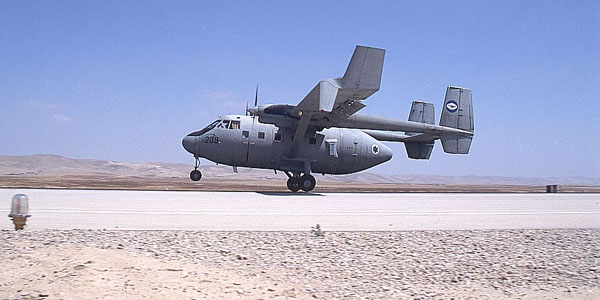|
|
|
Arava
|
|
| |
|

|
| |
The first transport that was planned and produced in Israel. The prototype first flew on November 27th 1969. The plane's civilian version was powered by a Pratt & Whitney PT6A-27, and was meant for flying 20 seated passengers or 12 medical evacuees on stretchers. The military version of the plane has a stronger power plant and can carry 24 armed troops, 17 fully equipped paratroopers, or 2.5 tons of cargo. The plane can also be armed with various weapons if necessary.
In the Yom Kippur War (1973)', several 'Arava 201' planes were conscripted by the IAF for transport missions in the Sinai. In the early 1980's, a number of Arava planes enetered service with the IAF, and carried out transport, instructional and operational assignments. After 'Peace for the Galilee', the planes were employed for carrying troops between Lebanon and Israel. These flights made use of the Arava's ability to land on short, rough airstrips.
Heyl Ha'avir also purchased the more advanced model of the Arava, the Arava 202, which is equipped with more powerful engines. Today, the Arava is one of the IAF's principal troop-carrying transports. |
| |
| |
Primary Role |
Twin engine short range transport |
Original |
Israel |
Dimensions |
Wingspan: 20.96 m
Length: 13.03 m
Height: 5.21 m
Wing area: 43.68 sq. m |
Capabilities |
Maximum speed: 316 kph
Ceiling: 8,200 m
Range: 1,306 km |
Weight |
Empty: 4,000 kg
Max. loaded: 6,804 kg . |
Power Plant |
Two Pratt & Whitney PT6A-34
engines rated at 750 hp each |
|

|
